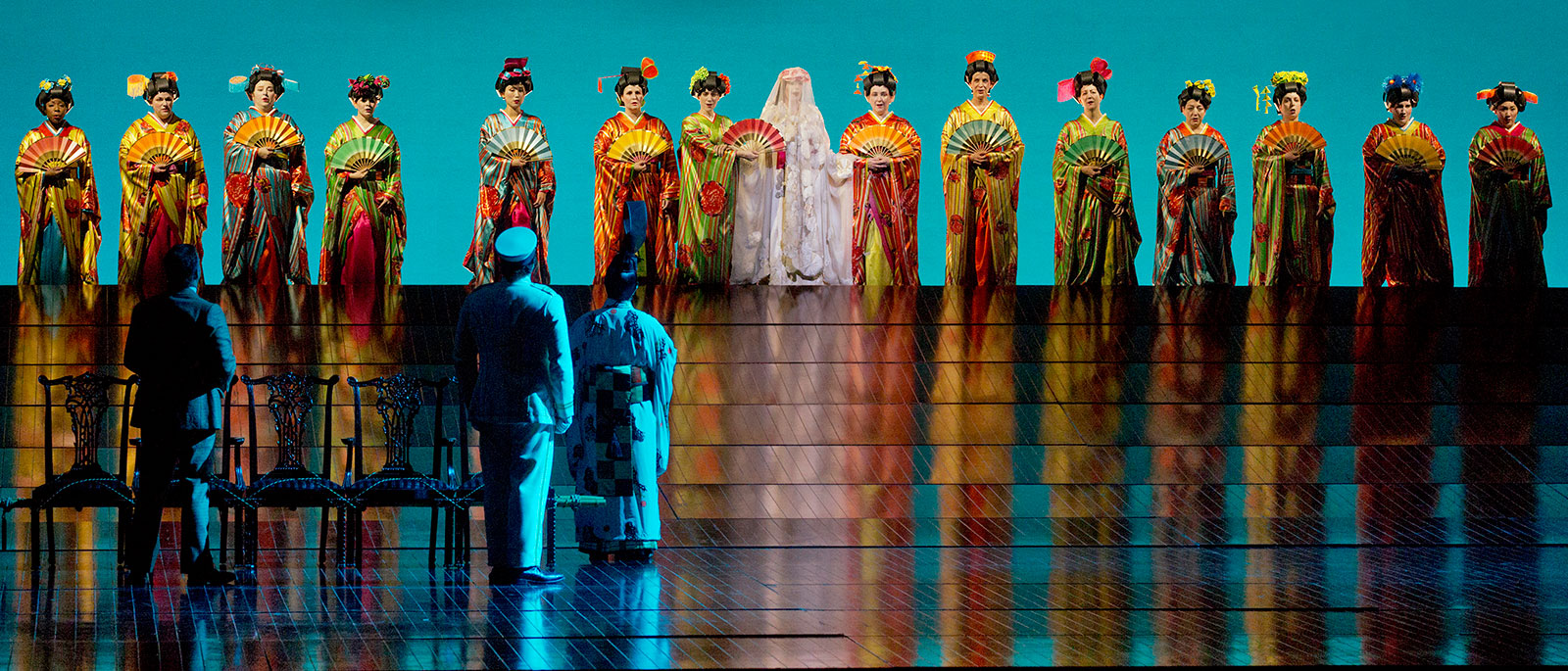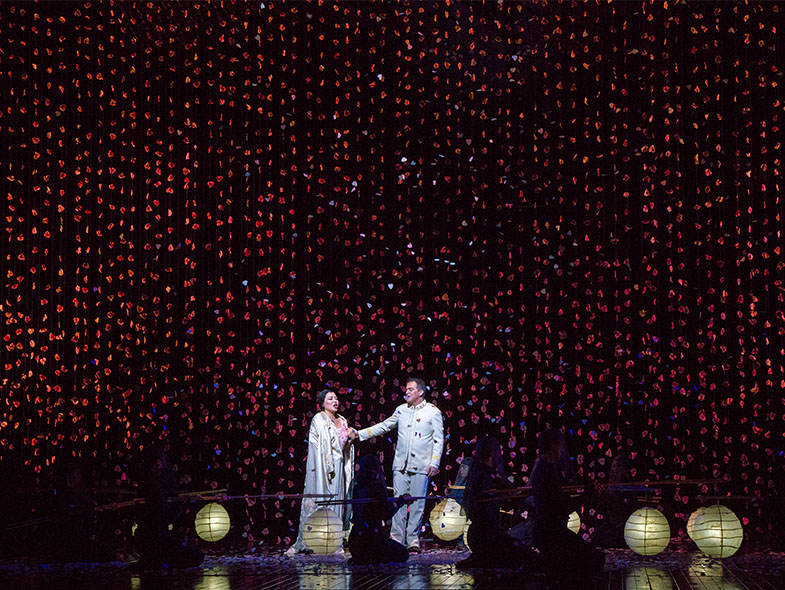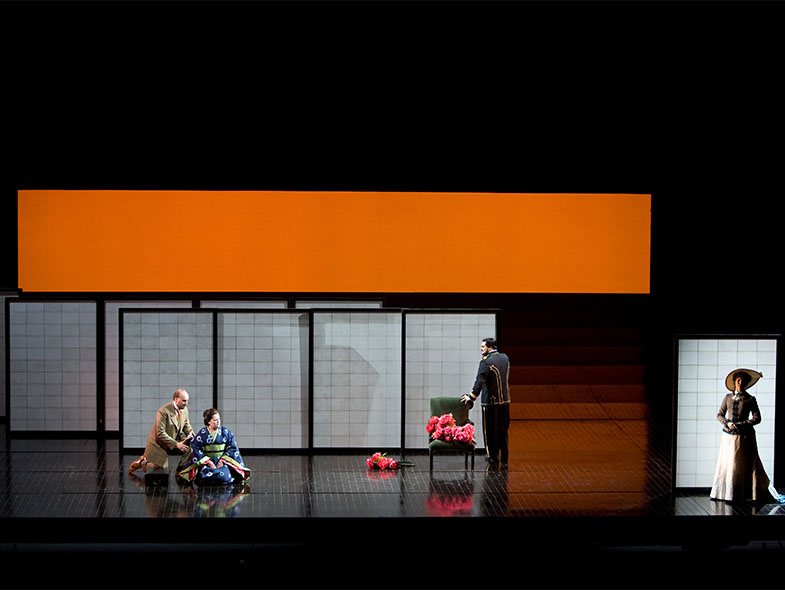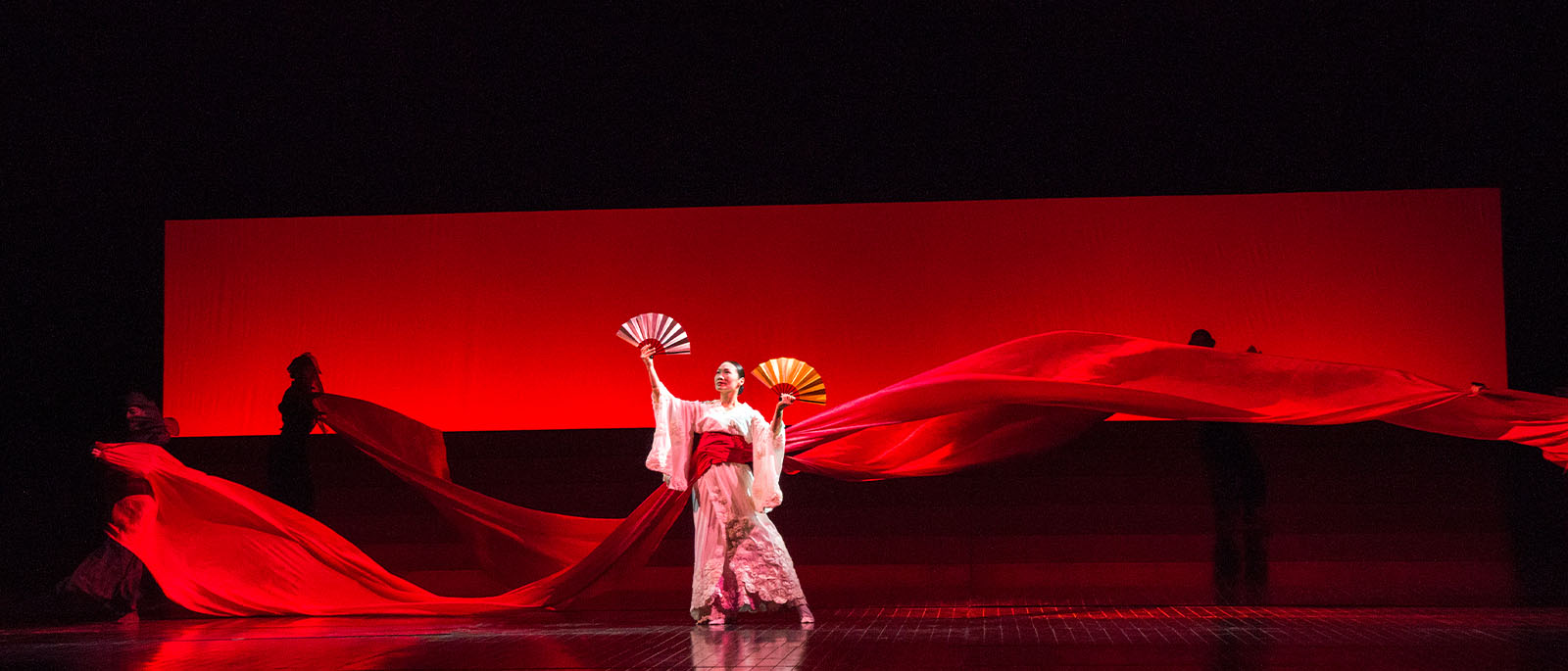
Giacomo Puccini
Madama Butterfly
Single tickets will go on sale to the general public in June 2025.
Patrons and Subscribers are eligible to purchase single tickets now. Please login to continue.
Overview
Cultures collide in Puccini’s poignant tale of a loyal geisha and a callous American naval officer whose fleeting romance leaves only devastation behind. In an exciting casting coup, three of today’s leading sopranos make their Met role debuts as Cio-Cio-San in a single season: Ailyn Pérez, Sonya Yoncheva, and Elena Stikhina. Tenors SeokJong Baek, Adam Smith—in his Met debut—and Matthew Polenzani co-star as Pinkerton in Anthony Minghella’s production, an “inspired vision” (The New York Times) that has become a classic.
Production a gift of Mercedes and Sid Bass
Languages
Languages sung in Madama Butterfly
Sung In
Italian
Titles
Title languages displayed for Madama Butterfly
Met Titles In
- English
- German
- Spanish
- Italian
Timeline
Timeline for the show, Madama Butterfly
Estimated Run Time
3 hrs
-
House Opens
-
Act I
60 mins
-
Intermission
30 mins
-
Acts II and III
90 mins
-
Opera Ends
Cast
Select a date from the dropdown to filter cast by date of performance

World premiere: Teatro alla Scala, Milan, 1904. The title character of Madama Butterfly—a young Japanese geisha who clings to the belief that her arrangement with a visiting American naval officer is a loving and permanent marriage—is one of the defining roles in opera. The story triggers ideas about cultural and sexual imperialism for people far removed from the opera house, and film, Broadway, and popular culture in general have riffed endlessly on it. The lyric beauty of Puccini’s score, especially the music for the thoroughly believable lead role, has made Butterfly timeless.
Creators
Giacomo Puccini (1858–1924) was immensely popular in his own lifetime, and his mature works remain staples in the repertory of most of the world’s opera companies. His librettists for Madama Butterfly, Giuseppe Giacosa and Luigi Illica, had also collaborated with the composer on his previous two operas, Tosca and La Bohème. Giacosa, a dramatist, was responsible for the stories, and Illica, a poet, worked primarily on the words themselves.
PRODUCTION
Anthony Minghella
DIRECTOR / CHOREOGRAPHER
Carolyn Choa
SET DESIGNER
Michael Levine
COSTUME DESIGNER
Han Feng
LIGHTING DESIGNER
Peter Mumford
PUPPETRY
Blind Summit Theatre

COMPOSER
Giacomo Puccini
Setting

The opera takes place in the Japanese port city of Nagasaki at the turn of the last century, at a time of expanding American international presence. Japan was hesitantly defining its global role, and Nagasaki was one of the country’s few ports open to foreign ships. Temporary marriages for foreign sailors were not unusual.
Music
Puccini achieved a new level of sophistication with his use of the orchestra in this score, with subtle colorings and sonorities throughout. But the opera rests squarely on the performer of the title role: On stage for most of the time, Cio-Cio-San is the only character that experiences true (and tragic) development. The singer must convey an astounding array of emotions and characteristics, from ethereal to fleshly to intelligent to dreamy-bordering-on-insane, to resigned in the final scene.

Share This Page
Social Share
Copied